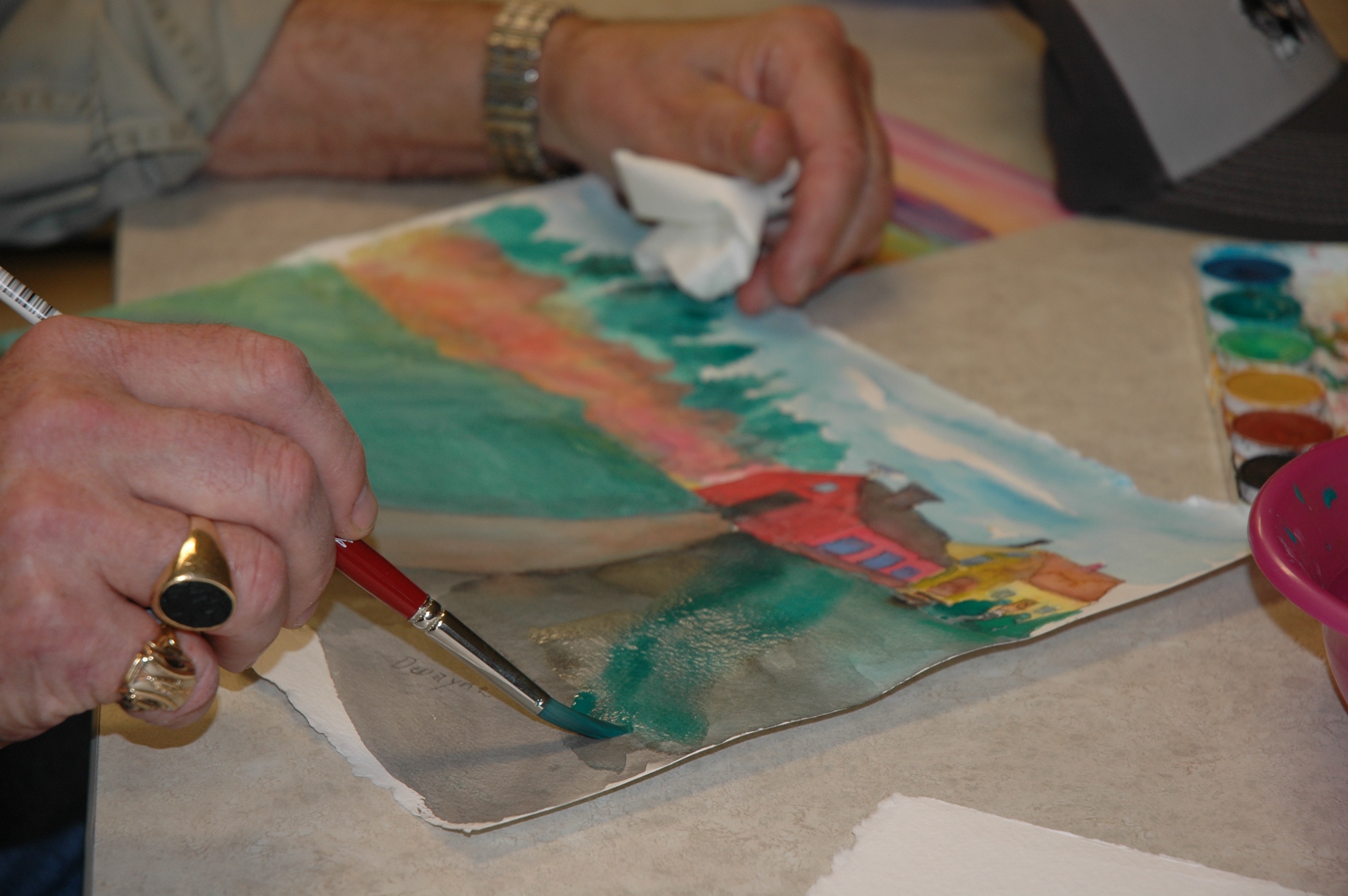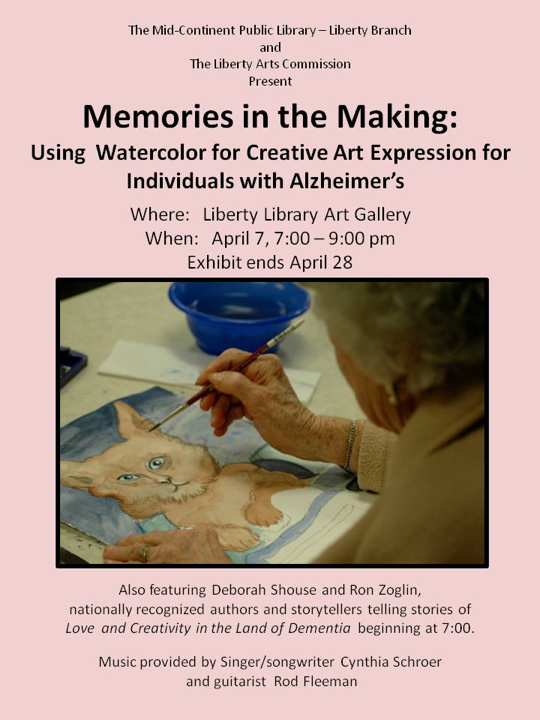Posts Tagged ‘Memories in the Making’
The Secret of Art-Power: Imagination Rules
This is a story celebrating the arts and creativity, an excerpt from my book Love in the Land of Dementia: Finding Hope in the Caregiver’s Journey.
We are delighted to be presenting a program in partnership with the Liberty Library Art Gallery, the Liberty Arts Commission, and the Heart of America Chapter of the Alzheimer’s Association. If you’re in our area, please feel join us.
The Hills Are Alive
I miss my mom and decide to attend a Memories in the Making art class, designed for people who are living with dementia. I want to meet some of the artists and feel my connection to Mom, who was an avid painter in her earlier years, through the artistic process. Still, I feel nervous as I walk through the nursing home and into a small activity area.
“We have a visitor today,” Harriet, the facilitator, tells the assembled group.
Everyone looks up.
“Come paint with us,” a woman says.
I smile and begin to relax. Harriet hands me bowl of water, paper, brush and watercolors and finds me a place. Then she introduces me to the artists.
Ed, a former veterinarian, has a photograph of a great blue heron in front him. He is a slight, spry man who looks like he could fix any emergency.
“That bird is really coming along,” Harriet tells Ed. Using colored pencils, he has sketched the upper half of the heron. The bird has an inquisitive look. Now Ed is concentrating on drawing an assortment of cattails, reeds, and other marsh plants in the background.
“Ed is married to Rhea,” Harriet tells me, as I look at the splash of free-form color on Rhea’s page. Rhea, who also has Alzheimer’s, is creating a sunset with vivid oranges and purples. I smile at the difference in their art—Ed’s controlled sense of detail, Rhea’s spontaneous bursts of color. I imagine those traits made for a good partnership.
“We’ve been together twenty-two years,” Rhea says. She has a plump welcoming look about her. “Or maybe it’s twenty-five years. Do you remember?” she asks Ed.
“A long time,” Ed says.
Norman has beautiful silver hair, deep brown eyes, and is dressed in a Polo shirt and slacks. He looks like he could easily be running a meeting or entertaining important clients on the golf course. Formerly an engineer, he was living in New Orleans, Harriet explains, and was moved up here to be near family. He is recreating a mountain lake scene and has quickly captured the essence of his photograph.
 “I just use my fingers to gauge the perspective,” he tells me, when I compliment his work. In his spare time, Harriet says, he is recreating maps of area bridges.
“I just use my fingers to gauge the perspective,” he tells me, when I compliment his work. In his spare time, Harriet says, he is recreating maps of area bridges.
As I sit down to my own paper and watercolors, I hear someone from the room next-door singing, The Sound of Music.
Harriet sings along and we chime in. As I paint, I feel a sense of connection. Harriet knows how to create a space where the artist can blossom.
Harriet starts a verse of Over There and everyone joins in.
After some time, Harriet says, “It’s almost time to stop for today.” I take a final walk around the table. Ed’s heron looks ready to enter an Audubon competition. Rhea’s sunset is colorful and dramatic. Norman’s hills look complete and his lake is taking shape. My own painting looks plain and unsophisticated next to the rest of the art.
“Have any of these people had art lessons before?” I ask, as I help Harriet empty water bowls and clear away used paper towels.
“No,” she tells me.
For most of these artists, this is a tender and uncertain time, a period when memory and rational thinking are often  blotchy and blurred, where words can fall away as quickly as autumn leaves. This art program gives them a chance to express themselves freely and creatively. Out of the mental chaos and confusion, the art emerges, vibrant, true, and exciting.
blotchy and blurred, where words can fall away as quickly as autumn leaves. This art program gives them a chance to express themselves freely and creatively. Out of the mental chaos and confusion, the art emerges, vibrant, true, and exciting.
As I am taking leave of Harriet, Norman comes back into the room.
“Is there white?” he says. “I’m going to need white for the snow on the mountain tops.”
“I’ll have some for next time,” Harriet promised. “Meanwhile, would you like one of these white pencils?”
Norman takes the pencil. “The snow makes all the difference,” he tells me. His walk is steady and sure and he leaves the room humming, “The hills are alive.”
 Deborah Shouse is the author of Love in the Land of Dementia: Finding Hope in the Caregiver’s Journey.
Deborah Shouse is the author of Love in the Land of Dementia: Finding Hope in the Caregiver’s Journey.

